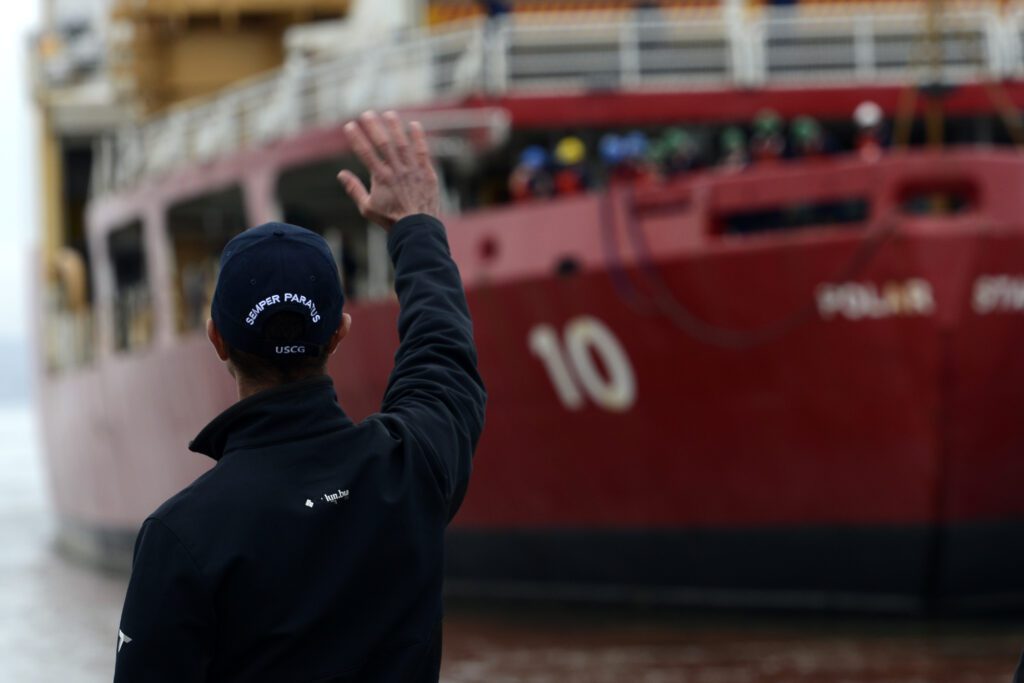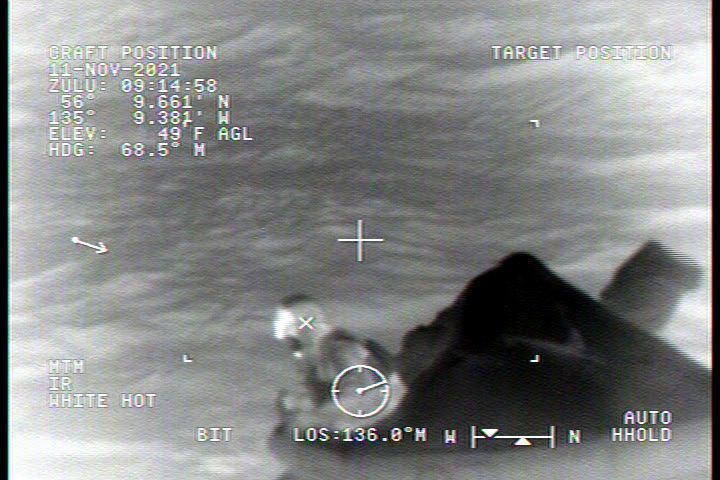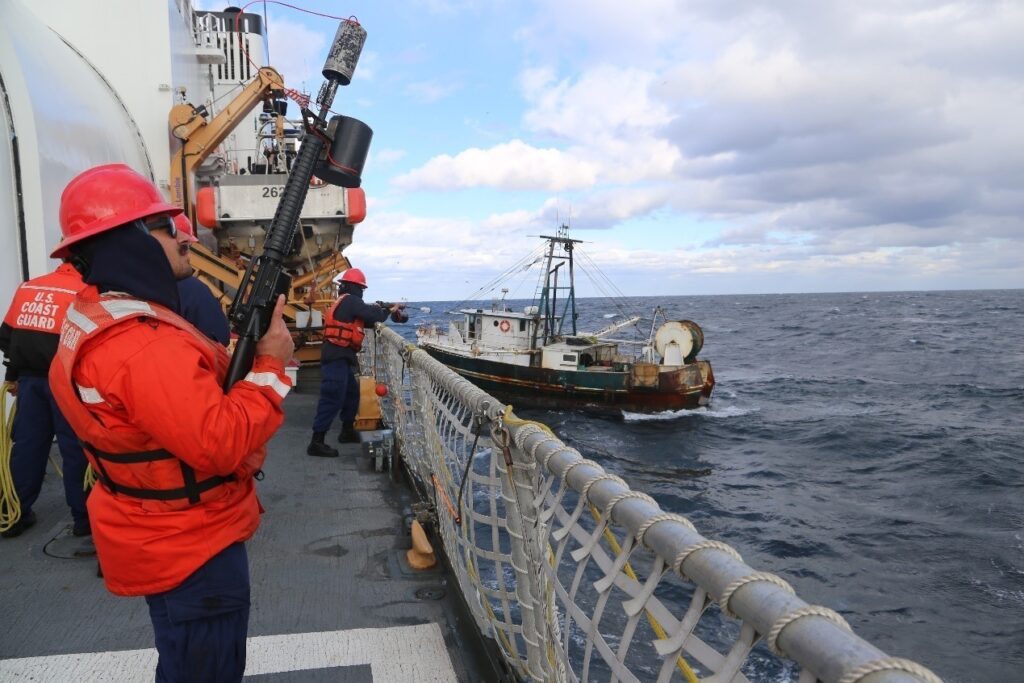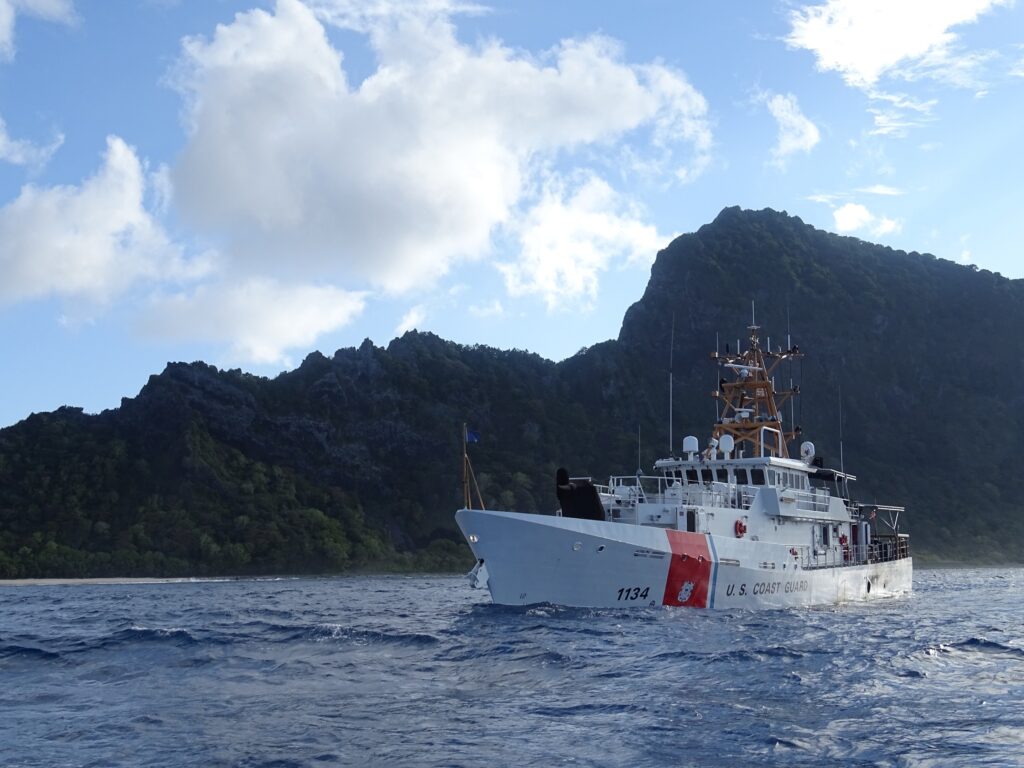Coast Guard Icebreaker Polar Star Begins 25th Antarctic Voyage

SEATTLE — The United States’ only heavy icebreaker departed its homeport in Seattle Nov. 13 with a crew of 159 U.S. Coast Guard men and women and is heading toward Antarctica, the Coast Guard Pacific Area said in a release.
This year marks Coast Guard Cutter Polar Star’s 25th journey to Antarctica in support of Operation Deep Freeze, an annual joint military mission to resupply the United States Antarctic stations in support of the National Science Foundation, the lead agency for the United States Antarctic Program.
Each year, the Polar Star crew breaks a navigable channel through ice, sometimes as much as 21 feet thick to allow fuel and supply ships to reach McMurdo Station, which is the largest Antarctic station and the logistics hub of the U.S. Antarctic Program.
“Maintaining and operating a 45-year-old ship in the harshest environment on the planet makes for arduous duty, but the women and men aboard Polar Star are committed to our important mission,” said Capt. William Woityra, Polar Star’s commanding officer. “The team is excited for this once-in-a-lifetime opportunity to visit a part of the world that most will never get to see.”
The U.S. Coast Guard is recapitalizing its polar icebreaker fleet to ensure continued access to the Polar regions, project U.S. sovereignty, and to protect the country’s economic, environmental, and national security interests.
“It’s vitally important that the U.S. maintains its leadership role in Antarctica,” said Vice Adm. Michael F. McAllister, commander Coast Guard Pacific Area. “The Coast Guard has an enduring commitment to the U.S. Antarctic Program through the Deep Freeze mission to provide uninhibited access to the region. We are proud to support a 60-year legacy of peaceful international cooperation for science and preservation of the pristine Antarctic environment and we will continue to ensure adherence to rules-based order into the future.”
Through Operation Deep Freeze, the U.S. Coast Guard provides direct logistical support to the National Science Foundation and maintains a regional presence that preserves Antarctica as a scientific refuge.








